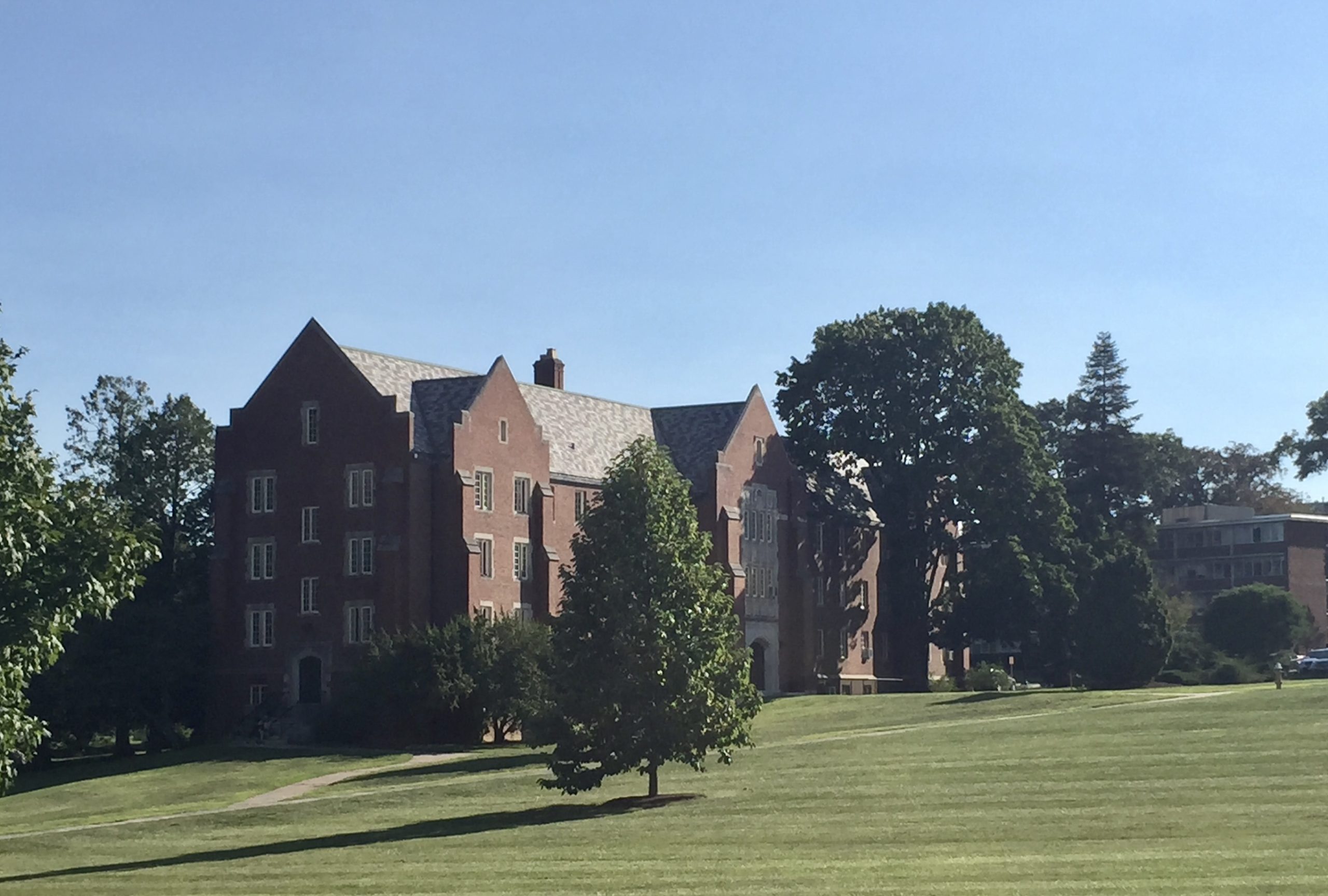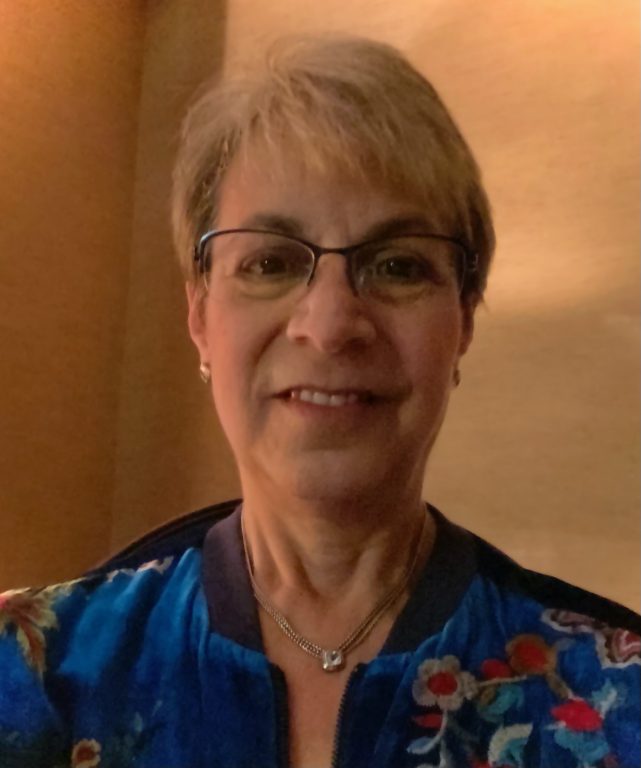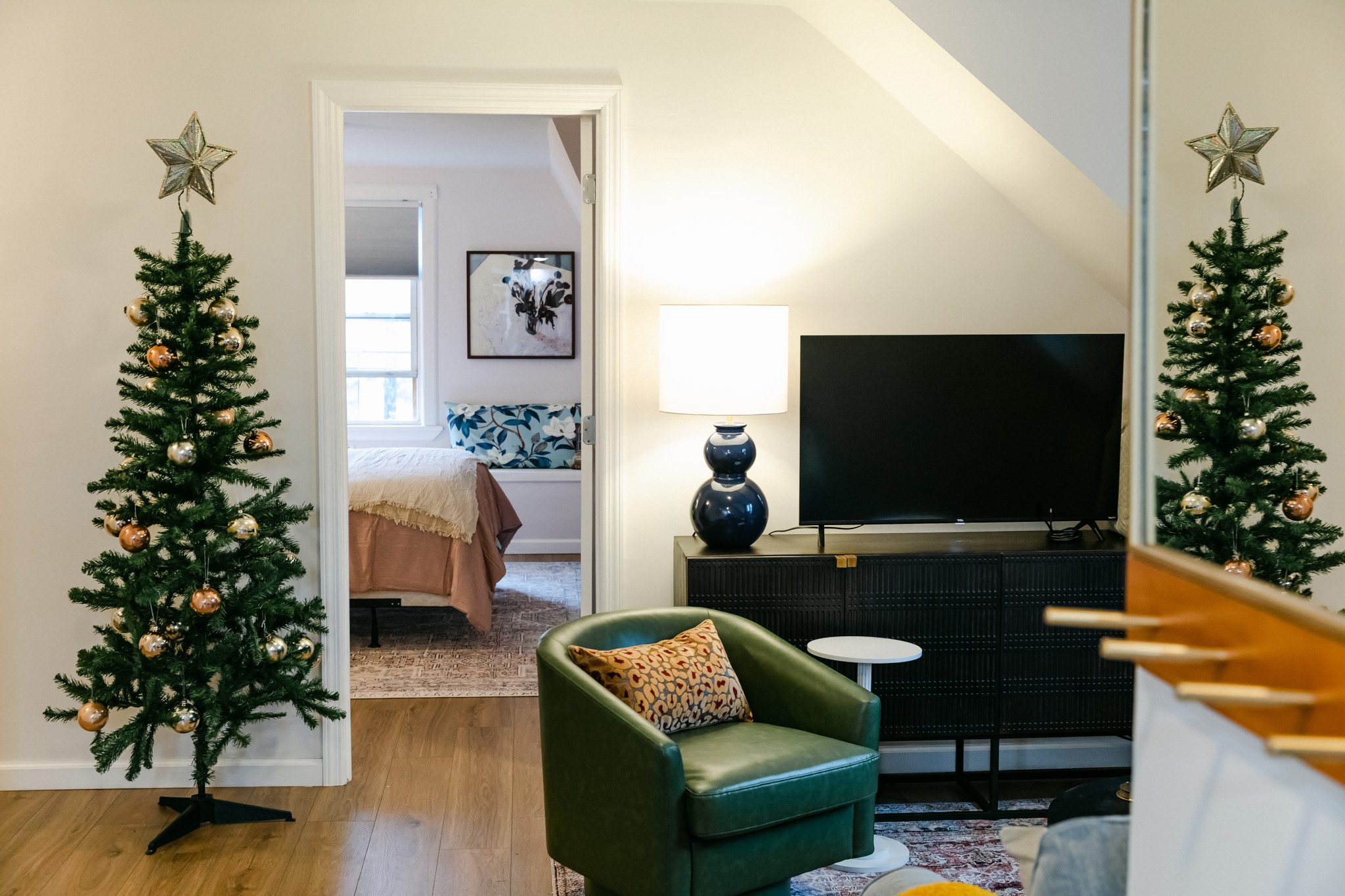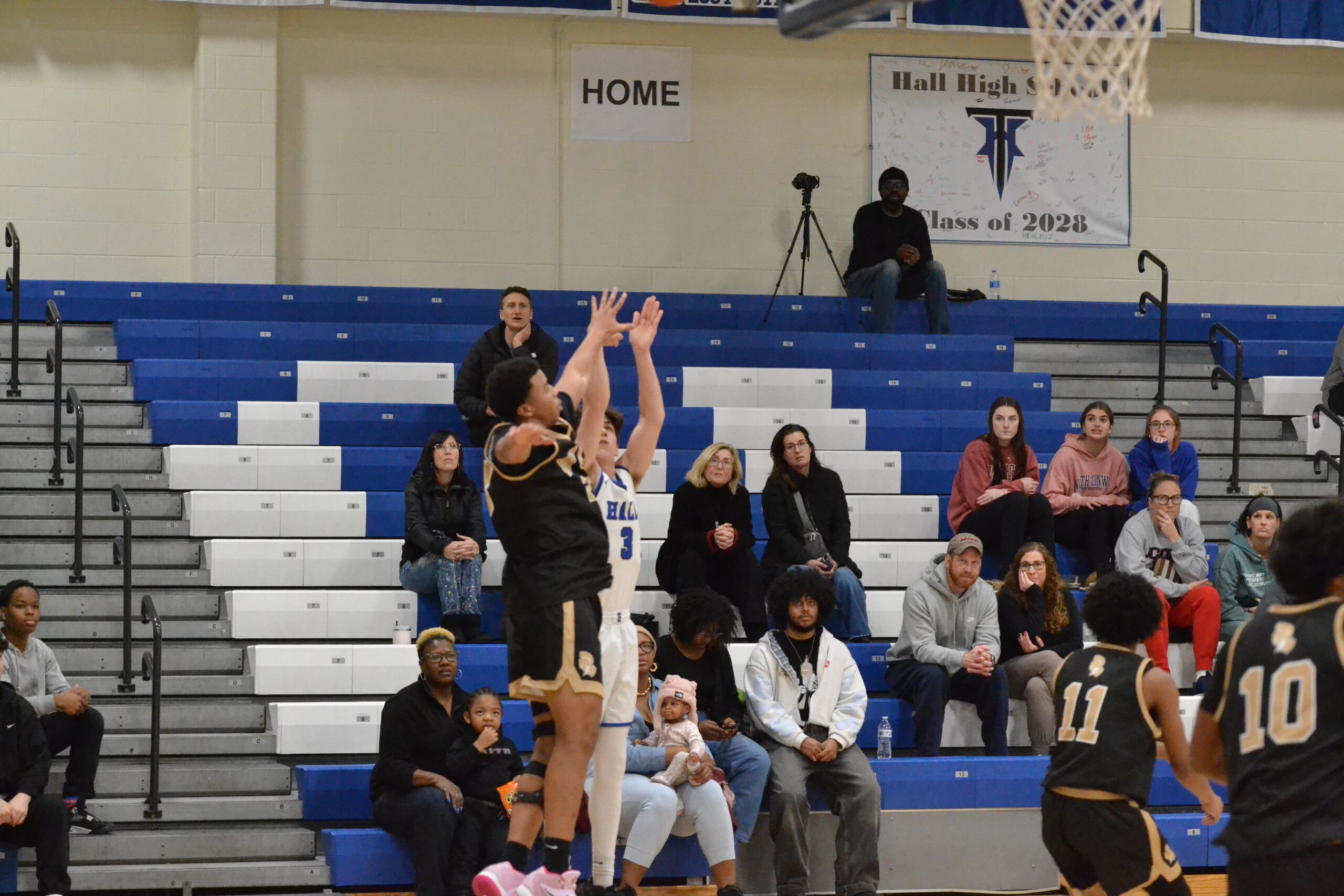College Bound: ‘I Know It When I See It’

Audio By Carbonatix

Photo credit: Ronni Newton (we-ha.com file photo)
We-Ha.com will be publishing a series of essays/blogs/reflections on the issue of going to college – primarily a set of thoughts and musings, along with some practical advice, intended to support students and parents as they embark on this journey. While many of our readers are experts in this topic, many others are less knowledgeable and have little outside support. We hope this is helpful to all readers as they go through the various stages of getting into and getting something out of college.
By Adrienne Leinwand Maslin

Adrienne Leinwand Maslin. Courtesy photo
In 1964 the U.S. Supreme Court heard the case Jacobellis v. Ohio, about whether the film The Lovers, directed by Louis Malle, was obscene and could be banned from public viewing. The Court decided that it did not meet the criteria for obscenity and was a protected form of free speech under the First Amendment to the Constitution of the United States.
However, the justices had no firm criteria for obscenity and the resultant ruling consisted of four different majority opinions and two dissenting ones. Justice Potter Stewart’s concurring opinion has been frequently quoted: “I shall not today attempt further to define the kinds of material I understand to be embraced within that shorthand description; and perhaps I could never succeed in intelligibly doing so. But I know it when I see it, and the motion picture involved in this case is not that. (Jacobellis, 378 U.S. at 197 (Stewart, J., concurring)).”
The Supreme Court distinguishes between pornography, which is protected by the First Amendment, and obscenity, which is not. The question is: When does one become the other? This is the issue colleges and universities contend with when determining whether a particular utterance is free speech or hate speech; if it is time to shut down a demonstration or protest or let it continue; or when flags, posters, or banners with political statements should be allowed to adorn residence halls, student centers, and other campus venues or banned from campus.
Many years ago, I was discussing something with my doctor and he said, “Get two doctors in a room and you’ll get three opinions.” When it comes to the the war between Hamas and Israel, and how that war has sparked protests on college campuses and has renewed the question of academic freedom and freedom of speech, and which led to a congressional investigation of three of the nation’s most prominent universities regarding their policies on antisemitism, and which in turn contributed to but was not the sole cause of the resignation of President Claudine Gay, the first Black president and second woman president of Harvard University as well as the resignation of Elizabeth Magill, president of the University of Pennsylvania – there are too many opinions to count them all. New articles and opinion pieces appear on an almost daily basis and many of them make compelling, albeit competing, arguments.
I have been avoiding this topic for the purpose of this column because of its complexity and contentiousness. On the issue of pro-Palestinian demonstrations, of antisemitism on college campuses, and the general issues of academic freedom and freedom of speech, I alone have about five different opinions. Each new perspective adds to my own complex thoughts and feelings. And each day that the war continues I reconsider my position. So, my tactic regarding a discussion of this topic in this column has simply been one of avoidance. But, it is too important to avoid. So, my purpose here is to present some history that may help you draw your own conclusions.
How do we define “academic freedom” or “free speech?” These two concepts tend to be lumped together and, to a certain extent, should be. According to the American Association of University Professors (AAUP): “Academic freedom is the freedom of a teacher or researcher in higher education to investigate and discuss the issues in his or her academic field, and to teach or publish findings without interference from political figures, boards of trustees, donors, or other entities. Academic freedom also protects the right of a faculty member to speak freely when participating in institutional governance, as well as to speak freely as a citizen.”
Students, too, have a form of academic freedom. It is the freedom to question and to express views related to the material being taught, even if those views are contrary to the professor’s. And it requires that students be evaluated on the quality of their work as defined by the professor at the start of the semester, not on the degree to which they agree or disagree with the professor. As private citizens, however, students also have the constitutional right to freedom of speech. Let’s take a look at these issues and consider the historical context.
The Free Speech Movement on college campuses began at The University of California, Berkeley, in the fall of 1964. Students at Berkeley, angered by the arrest of people who were distributing literature about the civil rights movement and by a general ban on political activity on campus, demanded that the administration lift the ban. Large protests ensued and nearly 800 Berkeley students were arrested. The administration attempted to quell the riots and push back on student political activity. By the spring 1965 semester, however, a new chancellor made arrangements for student political activity in certain places around campus, although with some constraints. This paved the way for the demonstrations that occurred on college campuses across the country protesting the Vietnam War and, linked to this, protesting the parental type of oversight applied by institutions of higher education.
The doctrine of in loco parentis or “in place of parents” developed in England. It was a way to resolve disputes between individual tutors and pupils who typically lived with their tutors rather than with their own families, making the tutor responsible for disciplinary action (Vanderbilt Law Review, Vol 44:1135). It subsequently found ground in the United States and became the model for all college-student relationships. Restrictions such as curfews, socialization, movement, and speech were all part of the concept of in loco parentis. And prior to the mid-1960s, situations of the unfair treatment of students almost always resulted in the courts upholding a university’s right to discipline its students.”
Dixon v. Alabama, a 1961 case that pitted six black students at Alabama State College – now Alabama State University – against the institution, was the beginning of the end for in loco parentis. In this case, the students were expelled from the college without a hearing for participating in demonstrations during the Civil Rights Movement. The Fifth Circuit Court of Appeals determined that the students were entitled to at least some due process, particularly as they were attending a public institution.
As the country experienced societal changes including the “influx of older students, the lowering of the age of majority, and changing social conditions (Vanderbilt Law Review, Vol. 44:1135),” in loco parentis was seen as an inadequate solution to disputes between a college’s administration and its students. The courts began to extend constitutional rights to students in colleges and universities and apply contract law to legal disputes although this did not exactly level the playing field; many courts still found in favor of colleges. But, in light of Dixon and a number of subsequent court cases, and a great influx of students to colleges between 1945 and 1970 – “in 1945 there were about 1,600,000 students enrolled in higher education in the United States; by 1970, that number had grown to 8,500,000 …” – as well as the changing demographics of college students, administrators no longer wanted to take on as much responsibility for acting as a legal guardian. It seemed, therefore, that the era of in loco parentis was over. But was it?
The early 1970s heralded the beginning of what has become known as the “bystander era.” During this time, the courts were loathe to hold universities responsible for the behavior of their students even in situations where students were severely injured such as these:
- Bradshaw v. Rawlings (1979): Delaware Valley College was not held liable for injury from a car accident to Donald Bradshaw “following a college sponsored off-campus picnic, where alcohol was served to underage students. The driver of the car was another student who became intoxicated at the picnic” (Lee, P. 2011. The Curious Life of In Loco Parentis in American Universities. Higher Education in Review, 8, 65-90 (https://scholar.harvard.edu/files/philip_lee/files/vol8lee.pdf)).
- Beach v. University of Utah (1986): Student Danna Beach “was injured after falling off a cliff in a university-sponsored field trip. Beach, who was under the legal drinking age, had consumed alcohol in front of a faculty advisor before being injured. As a result of her fall, she became a quadriplegic with limited use of her arms (Lee, P.).
- Rabel v. Illinois Wesleyan University (1987): “Cherie Rabel suffered permanent head injuries after being carried off from her residence hall by a male student who was engaged in a fraternity initiation” (Lee, P.).
As a result of situations such as these, colleges have tried to find a middle ground in relation to the responsibility they have to monitor student activity and keep students safe.
According to Vimal Patel (The New ‘In Loco Parentis’, The Chronicle of Higher Education, February 17, 2019), “As a matter of law, in loco parentis has been in retreat in recent decades. But as an organizing principle for college behavior, it’s making something of a comeback. This resurgent version, at traditional four-year colleges, is more attitudinal than legal, and motivated by 21st-century conditions. Past iterations were paternalistic, but the new version is driven by tuition-payers’ expectations, colleges’ concerns about legal liability, shifting cultural and social norms, and an evolving understanding of human development.
“You can see it in the crackdown on fraternities and sororities. It’s part of what drives colleges to try to prevent and punish sexual assault and harassment. It informs colleges’ responses, in clinics and classrooms, to the growing mental-health needs of students, as professors are being trained to recognize and deal with stresses in a student’s life.”
During the 1980s, a middle ground seems to have been reached. This is exemplified in the 1983 decision Mullins v. Pine Manor College. In this case, a female student “who had been raped on the campus sued the college for not taking reasonable steps to protect her” (Patel, Vimal. February 17, 2019). The Massachusetts court that heard the case said that: “The fact that a college need not police the morals of its resident students does not entitle it to abandon any effort to ensure their physical safety.”
The concept of students’ physical and emotional safety while at college began to gain traction when the children of “helicopter parents” – a term first coined in 1990 – became college aged. The year 2000 seems to be when helicopter parents made their way onto their children’s college campuses to advise their students, help them select roommates and plan class schedules, and even, in the case of one Boston University student, scrub the bathroom with antibacterial cleaner.
If you are a regular reader of this column you will know that colleges do a great deal to protect students and keep them safe, both physically and mentally/emotionally. In my columns, I have discussed sexual harassment and assault (Sept. 23, 2022) and mental health (April 24, 2023). Colleges have security or police officers who contribute to the maintenance of a safe campus and facilities staff who ensure the safety of residence halls and other college buildings. Institutions of higher education have policies regarding alcohol and drug use on campus, policies about smoking and vaping, the possession of weapons, and bringing animals onto campus. All of this in the name of safety and as a way to protect the university from liability.
Most colleges and universities also have policies that lay out the expectations for interactions with others for both students and employees. As an example, I have provided the link for the University of Connecticut’s student code of conduct. “Responsibilities of Community Life: The Student Code at UConn” is very much like that of many other colleges and I am using it here simply as an example.
UConn’s policy has a category called “harming behavior” which includes harassment and bullying. The policy states: “Harassment is the severe or repeated use by one or more students of a written, verbal, or electronic expression, or a physical act or gesture, or any combination thereof, directed at another individual that has the effect of:
- causing physical or emotional harm to the individual or damage to the individual’s property; and/or
- placing the individual in reasonable fear of harm to the individual and/or the individual’s property; and/or
- infringing on the rights of other University community members to fully participate in the programs, activities and mission of the University.”
The University of Connecticut also has a statement on Free Speech and Civility which can be accessed here. Part of the statement reads: “The University is firmly committed to respecting and protecting the freedom of all members of the University community to share opinions and ideas without interference. … It extends even to expression, ideas, or discussion that some members of the University community may believe wrong or even repugnant.”
The statement goes on to say, however, that: “This does not mean, however, that all expression is permitted without any limitation. … The University of Connecticut is permitted to, and will, limit expression in order to protect public safety and the rights of others.”
Where do we stand now?
So, let me summarize where we are at the moment. We have the free speech movement on college campuses during the mid-1960s which was closely related to the Civil Rights Movement, and which led to a rethinking of the policy of in loco parentis. Most American colleges and universities did away with in loco parentis by the early 1970s and took a very hands-off approach to issues that were not related to the academic mission of the institution. The 1980s, however, brought a rethinking of campus policies as they relate to student safety and college liability. By the year 2000, helicopter parents made their way onto their children’s college campuses and issues of physical and emotional safety gained new prominence.
Now let’s take a look at trigger warnings and safe spaces.
Although there is disagreement, trigger and content warnings are largely viewed as originating in the late-2000s, and were used primarily by bloggers to assist readers who had experienced trauma.
The practice originated in Internet communities, primarily for the benefit of people with post-traumatic stress disorder. The idea was to flag content that depicted or discussed common causes of trauma, like military combat, child abuse, incest and sexual violence. People could then choose whether or not to engage with this material (Manne, Kate. Why I Use Trigger Warnings, The New York Times, Sept. 19, 2015).
When trigger warnings moved into the classroom, they were embraced by many faculty and students who believed it was a way to help students manage the feelings of trauma that might arise when reading or discussing certain content including combat or sexual assault. However, the use of trigger warnings began to expand to cover the additional issues of “racism, colonialism, or classism” (Untangling the Trigger-Warning Debate: Curating a Complete Toolkit for Compassionate Praxis in the Classroom Victoria L. Dickman-Burnett, Maribeth Geaman, Journal of Thought, Vol. 53, No. 3/4 (Fall/Winter 2019), pp. 35-52 https://www.jstor.org/stable/26898558).
Related to trigger warnings is the concept of the “safe space” although there is disagreement in the higher education community about what that really is. Is it an intellectual space? An emotional safe space? A physical space? Is one sort of space okay but another not? In August 2016, the dean of students at the University of Chicago, John Ellison, sent a letter welcoming new students – members of the class of 2020. In his letter, which went viral, he told students: “Our commitment to academic freedom means that we do not support so-called trigger warnings, we do not cancel invited speakers because their topics might prove controversial and we do not condone the creation of intellectual safe spaces where individuals can retreat from ideas and perspectives at odds with their own.”
(My research reveals that the University of Chicago does have physical safe spaces where, for example, LGBTQ students might gather with the knowledge that they will not be harassed or harmed for their sexual identity or orientation.)
Forty-seven minutes up Rt. 41 from the University of Chicago, not too far beyond Wrigley Field, is Northwestern University in Evanston, Illinois. Morton Schapiro, president of Northwestern from 2009-2022, shared his thoughts about safe spaces which included this: “I’m an economist, not a sociologist or psychologist, but those experts tell me that students don’t fully embrace uncomfortable learning unless they are themselves comfortable. Safe spaces provide that comfort. The irony, it seems, is that the best hope we have of creating an inclusive community is to first create spaces where members of each group feel safe.”
To add to the story, colleges are being pressured by wealthy donors and outside organizations to act in certain ways. And while it might be easy to say that colleges should not cave to the desires brought by such parties, they are highly influential and colleges do not want to lose the support wealthy donors provide in the form of scholarships, facilities, or internships for students, or forgo the goodwill of outside organizations who are made up of the parents of future students.
We all probably know the role played by financier Ross Stevens, who threatened to withdraw a gift of $100 million to the University of Pennsylvania, and Marc Rowan, chair of the Board of Advisors of The Wharton School at Penn, who requested alumni to withhold their donations to Penn because of the university’s response to the Hamas-Israel war. Billionaire Harvard alumnus Bill Ackman called for the resignation of Presidents Gay (Harvard), Magill (University of Pennsylvania), and Kornbluth (MIT) for allowing what he considered to be antisemitism on their campuses. “But not until now have major donors so brazenly used their financial influence to hound presidents out of office for failing to come out as clearly as the donors would like on an issue of campus speech or expression” says Robert Reich, author, columnist, and former Secretary of Labor.
More recently, the University of Houston canceled an event introducing a sculpture called “Witness” by Shahzia Sikander because antiabortion groups both on and off-campus objected to the sculpture’s imagery which they said is satanic, and claimed it contained abortion rights messaging. According to university officials, the event was canceled because the artist was no longer available to present a talk about her work. Ms. Sikander, however, said she did not cancel her talk and offered alternative dates for a presentation. Her sculpture was previously installed in Madison Square Park in New York and a picture of it is available here.
So, colleges and universities are being asked to achieve what may be unachievable. They are to keep students physically and emotionally safe without maintaining a posture of in loco parentis. They are to provide safe spaces and trigger warnings while also making sure that students engage with information and opinions – both in the classroom and out of it – that challenge their perceptions and that express views that might be repugnant. Institutions of higher education are to stand their ground, protect open inquiry and the free expression of ideas without giving in to outside influences.
How do colleges provide an environment that allows students to learn without fear? When does free speech become hate speech? When is it appropriate to shut a protest down? When is it appropriate to cancel a speaker or an art event?
As an administrator I am not always able to answer these questions with any specificity. Many of us fumble the ball and ultimately rely on the Potter Stewart method: “I know it when I see it.” This is probably not the best way to handle such issues but the pressures are many, the information on which we base decisions is not always perfect, and there is not always time to solicit input and make the best choices.
Whether I agree or disagree with how campuses are handling campus demonstrations, academic freedom, free speech and hate speech is unimportant. But I hope I have provided some insight into the complexity of the decision-making regarding these issues.
Adrienne Leinwand Maslin recently retired from a 45-year career in higher education administration. She has worked at public and private institutions, urban and rural, large and small, and two-year and four-year, and is Dean Emerita at Middlesex Community College. She has held positions in admissions, affirmative action, president’s office, human resources, academic affairs, and student affairs. Maslin has a BA from the University of Vermont, an MEd from Boston University, and a PhD from the University of Oregon. She is presently creating a TV/web-based series on life skills and social issues for 9-12 year olds believing that the more familiar youngsters are with important social issues the easier their transition to college and adulthood will be. Information about this series as well as contact information can be found at www.shesroxanne.com.
Like what you see here? Click here to subscribe to We-Ha’s newsletter so you’ll always be in the know about what’s happening in West Hartford! Click the blue button below to become a supporter of We-Ha.com and our efforts to continue producing quality journalism.



